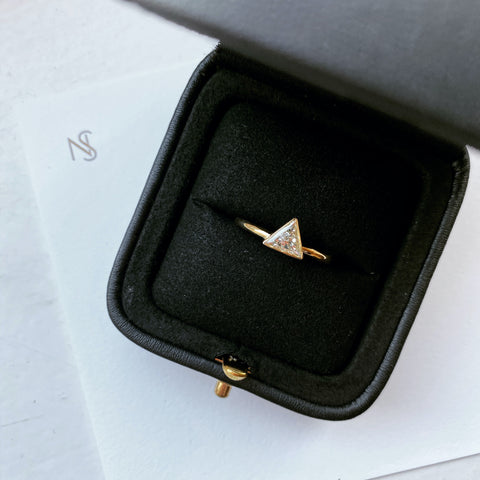Gem School: Which diamonds have the biggest sparkle?
We all want a piece of jewellery with that elusive sparkle, but how do you know what kind of diamond will be best for you? Read on …
An ultra-sparkly diamond is one of the biggest requests from customers. Thanks to Instagram and social media, our feeds are often flooded with images of large diamonds that refract and reflect the light with such enthusiasm, it’s similar to a KiraKira filter (remember that?). But what diamond sparkles the most? In truth, there isn’t just one type of diamond that sparkles the most (or has the most brilliance, to put it in technical terms); rather, a superb diamond requires a fine balancing act between the cut, colour, clarity and carat of a stone. Particularly, when colour, clarity and cut all come together in unison, the result is a bright diamond with plenty of sparkle.

What diamond shape has the most sparkle?
Generally, if you’re looking for a lot of sparkle, round, pear, cushion and oval shapes are a great choice. They are what are known as brilliant cut, designed with lots of facets to bounce and reflect the light - in a round alone, there are 58 individual facets! A step cut diamond, such as an emerald or asscher, doesn’t have as many facets so it reflects light in a different way (often referred to as a hall of mirrors effect), prized by those who love crisp symmetry. These diamonds are more understated but have an elegant appeal.
I’ve read that clarity is important – what does that mean?
Clarity refers to whether the diamond has any inclusions. Inclusions are small, naturally-formed flaws such as little breaks, or extra crystals, in the stone and are often seen only under 10X magnification. Inclusions are entirely natural but what’s important is that they shouldn’t interrupt the light reflection in the diamond - this will affect how much it sparkles. At Natasha Sherling, we only work with diamonds that are eye-clean – meaning no inclusions are visible to the naked eye - and are careful to select stones with inclusions located where they'll never impair the light return.

Should I prioritise cut?
Cut refers to a diamond’s proportions and symmetry – these must fall within certain parameters in order to maximise the sparkle of the diamond. While cut is often the least spoken about of the four Cs (cut, clarity, colour and carat) it is arguably the top priority when choosing your diamond. The cut of a diamond is what defines its ability to bounce light around. For instance, you could spend a lot of money on the best colour diamond that has excellent clarity, but if the diamond isn’t properly cut it has the potential to look like a piece of glass. It’s the cutting of the stone that defines the sparkle and when it comes to modern stones, Natasha Sherling only works with diamonds that fall in the top two grades of cut as defined by GIA.
If a diamond is a large carat size does that make it brighter?
Not necessarily. Don’t be fooled: the diamond still needs to be cut to the right proportions for the carat weight. Someone might boast that they paid for a one carat diamond but it looks like a 1.5 carat. Because carat refers to weight, this might mean that the stone is very shallow in order to have a bigger face-up 'spread' - which means it doesn't have enough space underneath the stone for the light to bounce around properly. This can result in a grey circle inside the diamond – experts often refer to this as a fish-eye effect. Equally if your stone is cut too deeply it won't reflect the light adequately, either.

What colour diamond gives the best sparkle?
After size, the colour of a diamond is often the top priority with clients. Many people have a strong preference for colourless diamonds but the truth is that the colour actually has no bearing on how much your diamond will sparkle. My advice to clients is to always be flexible on your colour grade, particularly if you are working within a budget. To our eye, it is always worth dropping a grade or two on colour rather than sacrificing on a premium cut. In six months’ time you’ll likely have forgotten what colour diamond you went for – but you will still take joy from seeing a beautiful and bright diamond on your hand.
What should I be looking for when I try on a diamond ring?
When you’re viewing a diamond with the naked eye you’re looking for two things: white light being reflected back at you (which is referred to as brilliance), and flashes of colours such as orange, red and blue (the official term for this is fire).

There is no straightforward formula as to what kind of colour, clarity and carat diamond you should buy for the best sparkle. Working with an expert will ensure you get the correct balance of these, with the best cut available, all within your budget. Lastly, don’t forget: seeing diamonds on a screen will never compare with viewing them in real life. It’s important to try them and see what works for you. For instance, with rings, everyone’s hand is different so a ring that looks great on your best friend or your sister isn’t necessarily going to flatter your hand.
The bottom line? Ask questions, try things on and work with an expert! We're always happy to help; feel free to be in touch with any questions or make an appointment to come in and chat through things in person!



